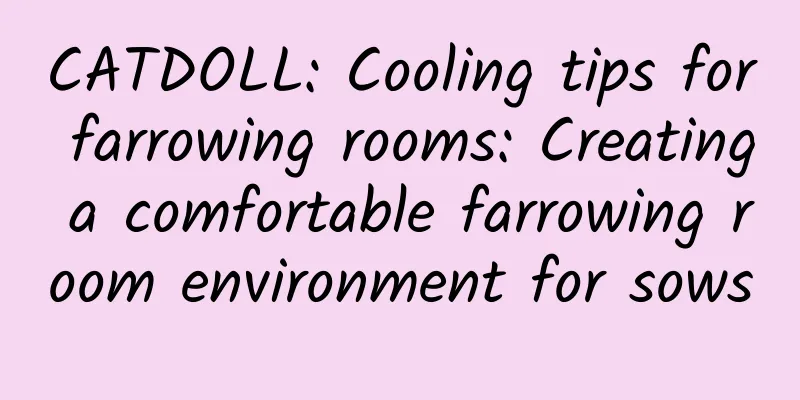CATDOLL : CATDOLL: How should a novice beekeeper purchase a bee colony and choose a good bee colony?

1. How should a novice beekeeper purchase a bee colony and choose a good bee colony?In the last section, we talked about the site selection for the apiary. In this section, let’s take a look at selecting bee colonies and placing beehives! 1. Beginner beekeepers purchase a small amount for trial First, it is advisable to purchase two small colonies at the same time. In terms of climate, it is best to choose spring and autumn, and when the temperature is between 20-30 degrees. At this time, the outside climate is mild, the bee colony is more active, and abundant nectar plants are in bloom. At this time, the purchased bee colonies reproduce faster. For beginners of beekeeping, they can start learning and practicing at the same time, so that the knowledge can be gradually consolidated in practice, and the bee colony can be gradually increased in reproduction, laying a solid foundation for the expansion of beekeeping in the future. (It should be noted that it is fine to raise Chinese bees or Italian bees, but do not raise the two kinds of bees in the same place. Italian bees like to bully Chinese bees. It is best to raise a single kind of bees). 2. Selection of bee colonies When buying a bee colony, you should first observe the outside of the beehive. If the worker bees are diligent in going in and out, and the proportion of worker bees carrying pollen back to the hive is large, it is generally good; when opening the box for inspection, if the bees are quiet and do not flutter at people, it means that the bee colony is docile and easy to manage; the worker bees have fresh and bright body colors, and the capped honeycombs are neat and connected in large pieces, which means the bee colony is healthy; the queen bee is strong, moves steadily, lays eggs neatly, moves quickly, and is covered with dense hairs with bright colors, which means that the queen bee is young and has a good physique. In addition, you should also observe the ratio of old bees to young bees, and the ratio of sugar honeycombs to brood honeycombs. The best bee colony is the one with bright body colors and a large ratio of young bees to brood honeycombs. In addition, if you are just starting to learn beekeeping, it is best to ask for some empty old honeycombs when buying bees. The previous section talked about site selection and precautions. Many people think that they should purchase the bee colonies before choosing a site. I believe that you should choose a site first and then purchase the bee colonies. After purchasing the bee colonies, you can directly place them in the selected site. Now let’s take a look at the placement and arrangement of the beehives! 3. Arrangement of beehives The first thing to do after deciding on a bee farm is to arrange the bee colonies in a suitable location. The method of arrangement depends on the size and environment of the site. In principle, the following aspects should be considered: The location should be determined in advance before the bee colony is transported. If the location of the hive has not been decided after the bee colony is transported, the hive door must not be opened. This is because as soon as the bees come out, they begin to recognize the environment around them and the location of the hive. If the hive position is changed in the future, some of the bees that have come out will not be able to return to the hive smoothly. Italian bees can be placed as shown in the picture If the space is spacious, the boxes can be slightly farther apart to make it easier for the bees to identify them. If the space is limited, they can be arranged more densely, but the boxes must be spaced a certain distance apart and pedestrian paths must be left for easy management and to prevent the bees from being unable to identify their own boxes and causing confusion. It is best to place the Chinese bees as shown in the picture, that is, scattered and staggered. I have more than ten to twenty boxes in front of and behind the house, and my friends around me also have dozens of boxes. They are completely scattered, so that we can make better use of the flowering period! The location of each box should be obvious so that if any swarming, theft, escape, etc. occurs, it will be clear at a glance and easy to manage. It is best for the box door to face south and the sun, followed by southeast, and then east. It is not suitable for northwest wind to intrude. The bottom of the box should be raised with bricks, wooden frames or stones, preferably 4-8 inches off the ground. The bottom of the box should be kept level from side to side, and the honeycombs inside the box should be parallel and vertical; but the front and back should be slightly tilted, that is, the back should be 0.5-1 inch higher than the front, so that rainwater will not flow in from the box door. At the same time, it is easy for bees to move stolen goods out of the box and keep the box clean. The hive door must be wide and not face a wall or fence, so that bees can enter and exit unhindered. If there are weeds, foul-smelling garbage, feces, etc. in front of the hive, they must be removed in time. After the hive door is opened, observe from the door. If a dead bee is found, use wire or thin bamboo sticks to hook it out to avoid blocking the passage. After one or two hours, open the hive again to check whether the queen bee is safe. That’s all for today’s sharing. I hope it will be helpful to everyone. In the next issue, I will share - instant understanding of the actual situation of the bee colony and the initial management of the bee colony! If you like it, please give it a like! 2. I have a group of bees with three honeycombs. I want to add another one but the bees won’t go to the honeycombs. What should I do?Either there are not enough bees or the honey is not stored. Check if there are any bees outside the partition. The weather is not very warm now. If there are few bees, they will not be able to grow in the honeycomb. Also, if there is no nectar source outside, if you do not continue to feed them, they will not grow in the honeycomb! It's not the right time to add it. 3. Bee breeding technology, how to catch bees and raise them at homeHello How to catch wild bee colonies 1. Using smell to lure is a good way to catch wild bee colonies. Don't discard the queen bees that are eliminated during beekeeping. You can soak them in 75% alcohol. When catching bee colonies, you can put this alcohol in the trapping bees, and then put the trapping box not far from the bee colony, and then hang a honeycomb with honey outside the trapping box. The bees in the bee colony will slowly come to the beehive. After they enter, close the nest door. 2. How to catch the queen bee. When catching wild bee colonies, it is best to catch the queen bee in the bee colony first, so that the bees in the bee colony will follow the smell of the queen bee into the beehive. The appearance of the queen bee is the most special existence in the bee colony. It is large in size and has low activity. Before catching it, you can use a sprayer to spray water on the bee colony to stun the bees, and then quickly catch the queen bee and put it in the prison cage to prevent the queen bee from escaping. 3. Fumigation is also a good way to catch wild bee colonies. When using the fumigation method, it is best to prepare a snakeskin bag, and it should be done at night. When catching, light the moxa stick and place it near the bee colony, and then quickly buckle the snakeskin bag on the bee colony. After the bees smell the smoke, they will slowly crawl into the depths of the snakeskin bag. After all the bees have entered, seal the mouth of the snakeskin bag, and then go home and move it into the beehive. Can Bee breeding technology& #40;I& #41; 1. A preliminary understanding of bees 1. Understanding of bees. Before beekeeping, let's first learn some knowledge about bees. At present, there are 7 million colonies of bees in my country, of which 90% are European bees imported from abroad, including Italian bees and Northeast black bees, and 10% are Chinese bees. Italian bees, referred to as Italian bees. They are widely raised in North China and Northeast China. The queen bee of Italian bees has strong egg-laying ability and the worker bees have strong insect-raising ability. They not only play an important role in production, but also are important breeding materials. Northeast black bees are an intermediate type of European black bees. They have strong reproductive ability and good wintering performance in cold areas. But they cannot maintain strong colonies in areas with low latitudes. Chinese bees are referred to as Chinese bees, which are suitable for living in Northeast my country, Northwest China, North China, East China, Southwest China and other regions. Chinese bees are agile, have a keen sense of smell, are hardworking, and have strong disease resistance, cold resistance and heat resistance. However, the honey production and the ability to secrete royal jelly are slightly lower than those of European bees. Through the introduction, you can choose the appropriate variety according to the specific conditions of each region and take corresponding breeding measures. 2. Bees are social insects. A group of bees usually consists of a queen bee, 1% drones, and 99% worker bees. The queen bee, drones, and worker bees each have their own specialties in the group, work together, and depend on each other. The queen bee is the female bee in the bee colony. Under normal circumstances, there is only one queen bee in a group of bees. The queen bee's duty is to lay eggs. After the queen bee mates once, the sperm stored in the spermatheca can meet the needs of reproduction throughout her life. She starts laying eggs 2 to 3 days after mating. A queen bee can lay 1,500 to 2,000 eggs a day and night. 3. The queen bee lays two kinds of eggs. One is a fertilized egg, which can develop into a worker bee, and the other is an unfertilized egg, which can develop into a drone. The queen bee develops from the fertilized eggs in the queen cell. The queen cell is also called the royal cell. The eggs in the queen cell grow up eating royal jelly, so they develop into queen bees. Everyone already knows that there can only be one queen bee in a group of bees. The life span of the queen bee can reach 3 to 5 years. In order to maintain a high egg-laying rate, a new queen bee is generally replaced in about one year. There are several main reasons for the production of a new queen bee in the bee colony: ① If the queen bee in a bee colony is lost or dies, it will take about 16 days for a new queen bee to develop. ②The bee colony is too large and needs to be divided. ③The old queen bee needs to be replaced. The work of raising new queens is usually done in the fall (usually in the summer) to prepare for high production in the next year. When two queens appear in a bee colony, they will fight each other until only one queen is left. Worker bees are incompletely developed female bees in the bee colony. After the worker bee larvae hatch, they are fed royal jelly by adult worker bees for the first three days, and then they are fed a mixture of honey and pollen from the fourth day. Due to the change in nutritional conditions, the reproductive organs are inhibited and the ability to lay eggs is lost. The function of worker bees is to take on all the work inside and outside the nest. There are different divisions of labor with different ages. When they are just hatched out of the room, they are pale in color, cannot fly, and cannot take on other work. They are called young bees. Young bees aged 1 to 3 days begin to be responsible for the work of keeping the nest warm and cleaning the nest room. Young bees aged 4 to 5 days are responsible for feeding large larvae. The royal jelly glands of worker bees aged 6 to 12 days are mature and are responsible for secreting royal jelly and feeding small larvae. The wax glands of worker bees aged 13 to 18 days are well developed, and they are responsible for secreting beeswax to build honeycombs, make honey, clean the nest, carry dead bees, and defend the hive. Worker bees after 18 days old are mainly responsible for collecting nectar, pollen, gum, and water until they die. Worker bees can live for 30 to 45 days during the honey flow period. In the northern winter, they can live for about half a year. 4. Drones are different from worker bees. They have no instinct to work and specialize in mating with virgin queens. Most drones start flying at 7 to 10 days old and become sexually mature at 12 days old. Mating usually takes place between 1 and 5 p.m. on sunny days. They die soon after mating. Although the life span of a drone can reach 3 to 4 months, due to its large appetite, it will be driven out of the nest after the nectar season ends in late autumn and die of starvation and cold. 5. The development of every bee goes through four stages: egg, larva, pupa and adult bee. 6. After the queen bee lays the fertilized eggs in the hive, within 6 hours, the worker bees will instinctively secrete some royal jelly around the eggs. After 3 days, the egg membrane will break and the larvae will hatch. After the larvae hatch, they molt every 36 hours. After 4 molts, they become pupae after 6 days. After the larvae pupate, they are inactive and do not eat, and only consume the nutrients stored in the body. After 11-12 days, they bite open the cover of the cell and crawl out of the hive to become young bees. The entire development process: the queen bee takes 16-17 days; the worker bee takes 20-21 days; the drone takes 22-24 days. Mastering the development cycle of bees can help us cultivate bees of appropriate age according to the local nectar plants to increase the output of bee products. 2. Equipment needed for bee breeding Next, let's take a look at the equipment needed to raise bees: beehives, also known as honeycombs, are places where bees live, reproduce, and store food. The beehive consists of a large cover, straw curtains, cover cloth, sub-cover, honeycomb, partitions, queen excluders, etc. There are thousands of neatly arranged and interconnected hexagonal cells on both sides of the honeycomb. 1. Comb. Comb fixed on a wooden frame is called a frame of honeycomb. According to the amount of honey, pollen, and larvae on the honeycomb, it is called honeycomb, pollen comb, and brood comb. According to the age of the brood comb, it is divided into egg comb, worm comb, capped comb, and empty comb. The beehive with 10 frames of honeycomb is the most widely used standard beehive. The hive can be expanded in time by stacking supers. 2. Bee path. The distance between each honeycomb is called the bee path. 3. Queen excluders are used to separate the insect breeding area and the honey storage area, which is beneficial to the maturation and collection of honey and improves production efficiency. 3. Preparations before beekeeping After understanding the general situation of bees, the following preparations should be made before starting beekeeping. 1. Plants that can be used by bees to collect nectar and pollen are called nectar plants. Nectar is the basis of beekeeping production. Before determining the location for bee placement, it is necessary to investigate the types, areas, flowering periods, etc. of nectar plants. The main nectar plants that can collect a large amount of commercial honey are: rapeseed in oil crops, sweet clover and alfalfa in forage and green manure, jujube trees in fruit trees, locust trees in forests, and vitex in shrubs. Usually, a group of bees requires about 2 to 4 mu of nectar plants. It is also necessary to understand the flowering period of various nectar plants and the honey production of bees in previous years. The bee placement site should be selected within 2 km of the main nectar plants. The closer the apiary is to the nectar plants, the better. There should be a clean water source near the apiary. Such as lakes, streams, canals, etc., to ensure that the bees can collect water and the beekeepers can use water for daily life. The apiary should be selected in a flat, dry, sunny, open southeast direction without obstacles. 2. It is best to place bees in the northwest where there is a small hillside, house or fence. It is not suitable to place bees in places where there are loudspeakers, street lights or insect traps nearby. 3. When purchasing bee colonies, you must choose the type of bees according to the local nectar source, climate and other conditions. In the plains of Northwest my country, North China and Northeast China, the summer is dry and there are large nectar sources with a long nectar flow period. Italian bees can be selected. In the mountainous areas of Northeast China, the winter is long and cold, the spring is short, and the main nectar source blooms early. You can choose the Northeast black bees with strong cold resistance. If the local area is located in the mountainous area and there is no concentrated large nectar source, you can choose Chinese bees. 4. The best time to buy bee colonies is in early spring, when the temperature rises and stabilizes, and when nectar plants begin to bloom. Buying at this time is conducive to the reproduction of bee colonies and the effect is seen in the same year. You can also buy in summer and autumn, but you should pay attention to the fact that there should be at least one main nectar source in the same year. In this way, even if you can't get a lot of commercial honey, at least you can guarantee the feed reserves needed for the bee colony to overwinter. Note that it is not advisable to buy bees after the end of the year's nectar source. Because at this time, in addition to the purchase cost, you also have to buy sugar to feed the bees. During the winter, the bee colony may die. When buying a bee colony, you should also pay attention to the quality of the bee colony. The age of the queen bee should not exceed two years. If you buy bees in summer and autumn, it is best to choose a new queen of the year. A good quality queen bee has a large abdomen, a slightly pointed tail, four wings and six legs, and a steady movement. The egg-laying area is large and neat. Good quality worker bees are large and bright in color. When unpacking and taking the comb, they do not crawl around and have a gentle temperament. The whole bee colony should be healthy and disease-free. The number of bees in the bee colony should not be less than 2 frames in early spring, and should be more than 5 frames in summer and autumn, and there should be a certain number of brood combs. For example, a bee colony with 5 frames should have 3 to 4 frames of brood combs, of which at least half should be capped combs. In addition, it should be noted that each comb must have 0.5 to 1 kg of feed combs. The combs should not be too old. There should not be many drone cells on the combs. 5. After the bee colony is transported back, if there is noise in the hive, you can lift the hive cover, place it on the auxiliary cover for ventilation, and spray water on the hive door. If the site is spacious, the beehive can be arranged in a single box. The front row and the back row are required to be staggered, with a distance of 2 to 3 meters between each row, and a distance of 1 to 2 meters between beehives, so that the bees can recognize the nest and personnel can manage it. If the site is small, two boxes can also be arranged side by side. Two boxes in a group, 20 cm apart. When arranging the beehives, the direction of the hive door is generally south, but it can also be east. Note that the hive door cannot face west, so as to avoid direct sunlight in the afternoon to the hive door, causing the hive temperature to be too high. 6. Bee stings are a self-defense instinct of bees. Rough management, standing in front of the beehive, blocking the bees' path, or beekeepers with peculiar smells can cause bee stings. Bee stings are harmless to humans. If you are stung by accident, do not panic and slap your hands. Calmly scrape off the sting with your fingernails. Do not pull out the sting with your hands to avoid more venom entering the skin. The stung area can be washed with water. Then apply a little ammonia or soapy water. 4. Daily management of bee colonies 1. Bee colony inspection By inspecting the bee colony, we can understand the changes of the bee colony, so that we can take timely measures and make adjustments to create favorable living conditions for the bees. The inspection methods are divided into unpacking inspection and observation outside the box. When unpacking the bee colony, in order to avoid bee stings, you should wear light-colored clothes and a mask. People should face away from the sun. When opening the auxiliary box cover, first pry it gently with a scraper, and then push the auxiliary cover with your fingers to separate it from the propolis stuck to the box mouth. Turn over the auxiliary cover and lay it flat in front of the beehive. One end is placed on the nest door board to facilitate the bees on the auxiliary cover to climb back into the nest. Use a scraper to gently move the partition and the nest frame to separate the frame ears from the grooves of the box body. Use the thumbs and index fingers of both hands to pinch the frame ears at both ends, and carefully lift the honeycomb vertically. Note that the honeycombs cannot rub against each other to avoid scratching the queen bee or angering the bees. There are two ways to inspect the honeycomb. ① Lift the comb to the height of your eyes, look at the side you are facing first, then flip it over with the beam on the comb as the axis to look at the other side. Note that when flipping, the comb should always be kept vertical to the ground to prevent nectar and pollen from falling out of the cells. ② First look at the side facing the line of sight, then lower the honeycomb, tilt the upper part of the honeycomb 45 degrees towards the line of sight, and look at the other side. When checking the honeycomb, you must do it from above the hive, especially for a double queen colony. It is best to observe from above the side of the honeycomb to prevent the queen from falling and causing damage. Because the bees are crowded and difficult to observe, you can use your wrist to quickly shake the honeycomb up and down a few times when it is halfway out of the hive to use inertia to shake off the bees. If there are many bees left on the honeycomb, you can use a soft bee broom to gently brush them away. 2. Contents to be checked ① Check whether the queen bee exists. Take out the honeycomb from the center of the bee colony. If you can't see the queen bee or the eggs, the bees will crawl around and make a sound like flapping wings. This is a sign that the bee colony has lost its queen. If there are many eggs in the nest, and most of them are laid on the wall of the nest, it means that the queen has been lost for a long time and the worker bees have begun to lay eggs. Check it two or three times to confirm that there is no queen bee, and then put in a new queen. Otherwise, once two queen bees meet, both will suffer losses, causing losses to farmers. ② Check the queen bee's egg-laying situation. Open the box cover, the bees work in an orderly manner, and eggs can be seen on the combs, indicating that the queen bee is laying eggs. In a single-queen bee colony, the ratio of eggs, larvae, and capped combs should be 1:2:4. That is: one egg comb, 2 worm combs, 4 capped combs, and 1 to 2 frames of honey and pollen combs. If the egg-laying area on the brood comb is large, it indicates that the queen bee is laying eggs vigorously and the colony is normal. If the queen bee's chest and abdomen are small, the color becomes darker, it is lame, and it is missing wings, it indicates that this is a low-quality queen bee. If there are no eggs on the comb, but there are natural queen cells, the bees are slacking, indicating that they will be swarming. If the brood comb area is small, the bee colony develops slower than other colonies, indicating that the queen bee has poor egg-laying ability or egg-laying is at a low ebb. 2. Contents to be checked ① Check whether the queen bee exists. Take out the honeycomb from the center of the bee colony. If you can't see the queen bee or the eggs, the bees will crawl around and make a sound like flapping wings. This is a sign that the bee colony has lost its queen. If there are many eggs in the nest, and most of them are laid on the wall of the nest, it means that the queen has been lost for a long time and the worker bees have begun to lay eggs. Check it two or three times to confirm that there is no queen bee, and then put in a new queen. Otherwise, once two queen bees meet, both will suffer losses, causing losses to farmers. ② Check the queen bee's egg-laying situation. Open the box cover, the bees work in an orderly manner, and eggs can be seen on the combs, indicating that the queen bee is laying eggs. In a single-queen bee colony, the ratio of eggs, larvae, and capped combs should be 1:2:4. That is: one egg comb, 2 worm combs, 4 capped combs, and 1 to 2 frames of honey and pollen combs. If the egg-laying area on the brood comb is large, it indicates that the queen bee is laying eggs vigorously and the colony is normal. If the queen bee's chest and abdomen are small, the color becomes darker, it is lame, and it is missing wings, it indicates that this is a low-quality queen bee. If there are no eggs on the comb, but there are natural queen cells, the bees are slacking, indicating that they will be swarming. If the brood comb area is small, the colony develops slower than other colonies, indicating that the queen bee has poor egg-laying ability or egg-laying is at a low ebb. ③ Check the relationship between the bees and the honeycomb. When you open the sub-cover, if you find that the sub-cover, the outside of the partition, and the side combs are full of bees, it means that there are more bees than honeycombs and you need to add more honeycombs. If there are few bees on the honeycombs and no bees on the partitions, it means that there are more honeycombs than bees. If there are many bees on the partitions and few bees on the honeycombs, it means that the temperature in the hive is high and the humidity is low, and the bees have left the honeycombs. ④ Check the honey storage in the box. When you open the nest cover, you can smell the fragrance of honey and see the elevated white beeswax honey cell cover on the top of each honeycomb. Lift the side honeycomb and it will feel heavy. This indicates that there is enough honey in the box. If the bees are uneasy or panic after opening the box, the honeycomb feels light and some bees fall, it means that there is a lack of honey in the box. There is no disease, but the bees on the brood comb are not neat, indicating that there was a lack of honey. If the brood comb has abandoned the bees, it indicates that there is a serious lack of honey. 3. Reinstall the honeycomb in place After the honeycomb inspection is completed, it must be reinstalled in its original position. When reinstalling, pay attention to the bee path to be kept at 8 to 9 mm. Insert the partition and gently shake the sub-cover up and down to urge the bees to leave the box edge. Finally, close the box cover. The box is usually opened for inspection every 10 to 15 days. It is best to do it at noon in early spring and at 10 am and 4 pm in summer. Hope that helps! Please follow and rate! I wish you and your family happiness and health! |
<<: CATDOLL: How can I get rid of all the cockroaches in my house?
Recommend
Why do cats lose their appetite?
Reasons why cats have a poor appetite: 1. Stress ...
CATDOLL: I want to raise yellow croaker. What experience do you have in raising yellow croaker?
As a marine fish, yellow croaker was previously c...
CATDOLL: How to kill a catfish
1. How to kill duckbill fish Treatment after fall...
CATDOLL: How to remove small red spiders growing on asparagus fern
(1) Soak citrus peels in 10 times the amount of w...
CATDOLL: How to feed sheep correctly
introduction Sheep are one of the most common liv...
CATDOLL: Another meaning of fish farming
1. Another meaning of fish farming Hello: Your ti...
CATDOLL: How to ferment wheat bran to breed fly maggots
1. How to ferment wheat bran to breed fly maggots...
CATDOLL: How to scientifically prepare ingredients for artificially raising foxes
Basic outline of artificial fox breeding: Artific...
CATDOLL: Why do chickens have green stools? Analysis of the causes of green stools in chickens
Why do chickens have green stools? Many farmers a...
How to get from Xinxiang to Pingdu: A comprehensive transportation guide
In modern cities, there are many ways to travel, ...
CATDOLL: How many crucian carp, silver carp, bighead carp and carp fry should be scattered per acre of water? How much does the fry cost? How many kilograms of adult fish can be produced? How much can it be sold for?
How many crucian carp, silver carp, bighead carp ...
CATDOLL: The most effective way to get rid of ants (The most effective way to get rid of ants)
1. What is the most effective way to get rid of a...
How to judge the quality of sow's afterbirth? Types and selection tips of sow's afterbirth
Understanding the importance of sow afterbirth So...
CATDOLL: How much is the profit of 10 acres of crab farming?
How much is the profit of 10 acres of crab farmin...
CATDOLL: How long can you keep mandarin fish at home?
Mandarin fish can be kept at home for about a day...









